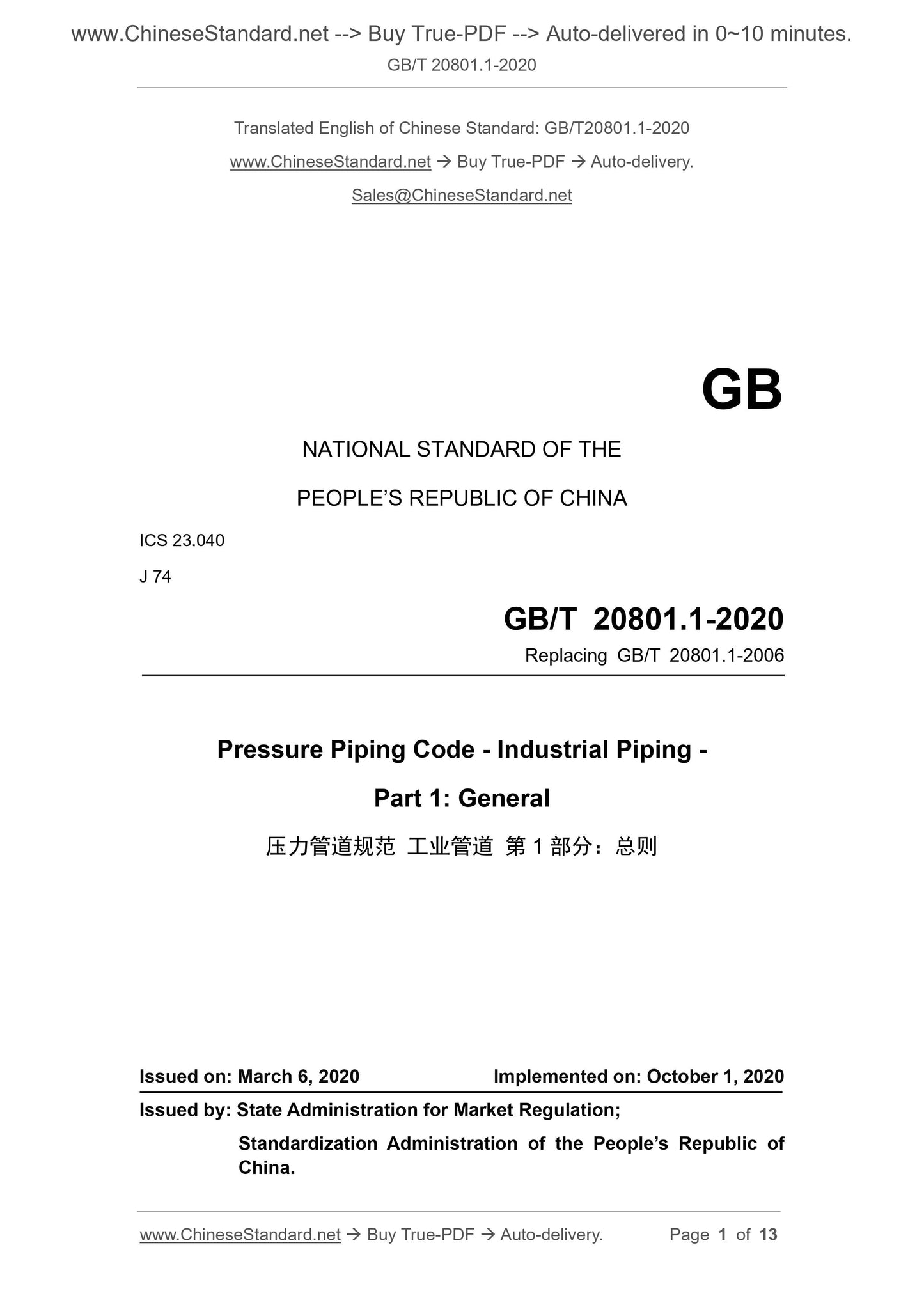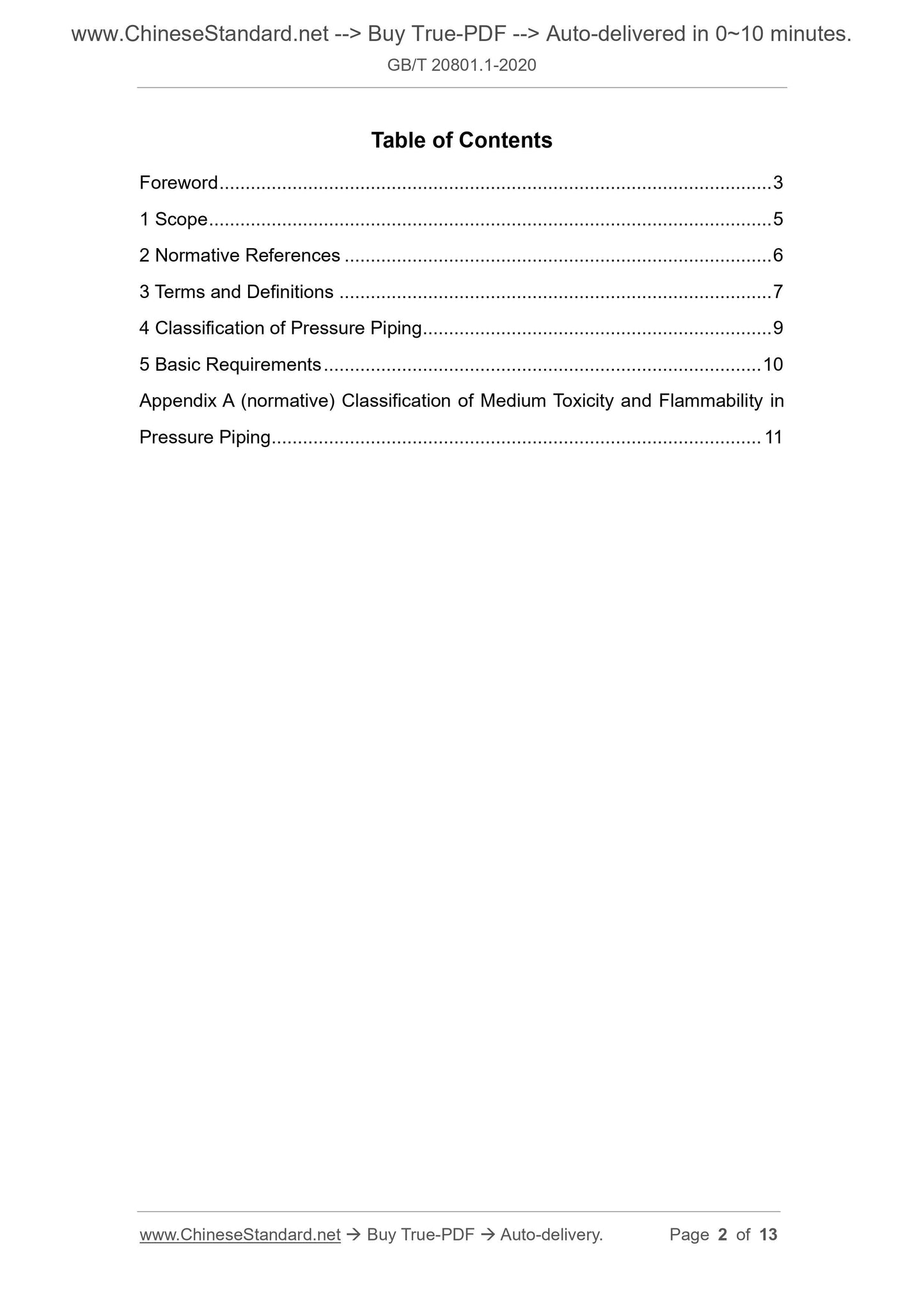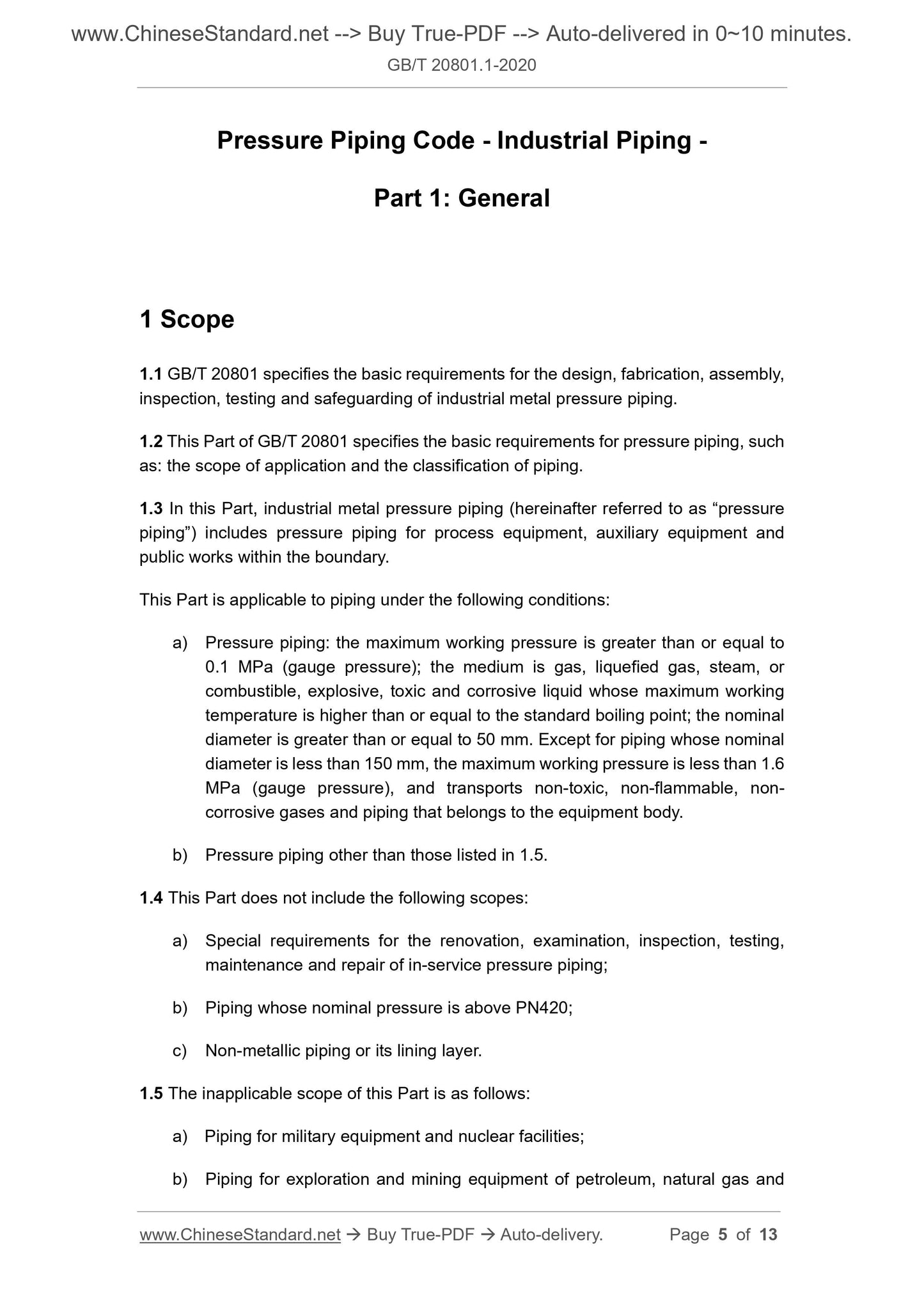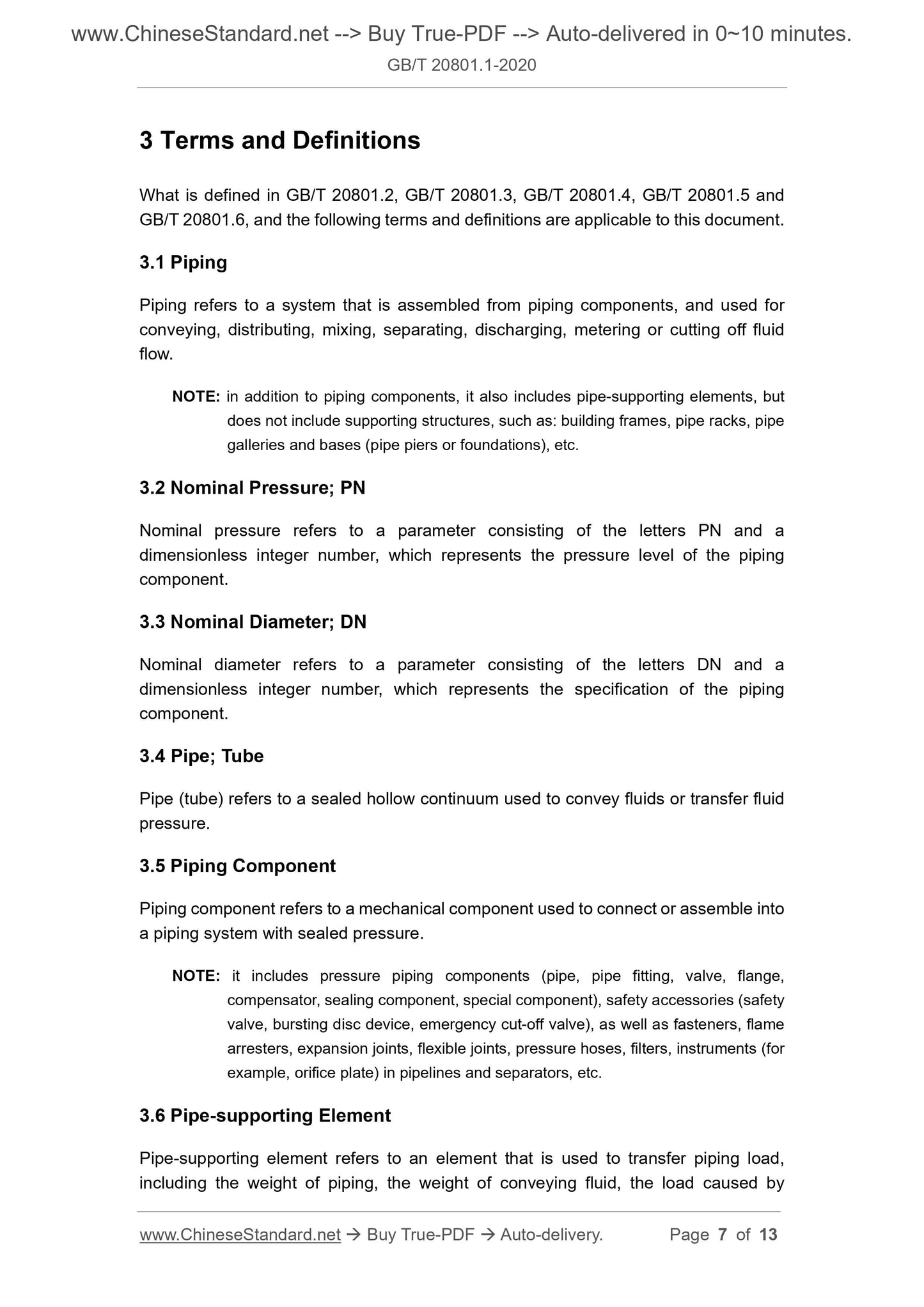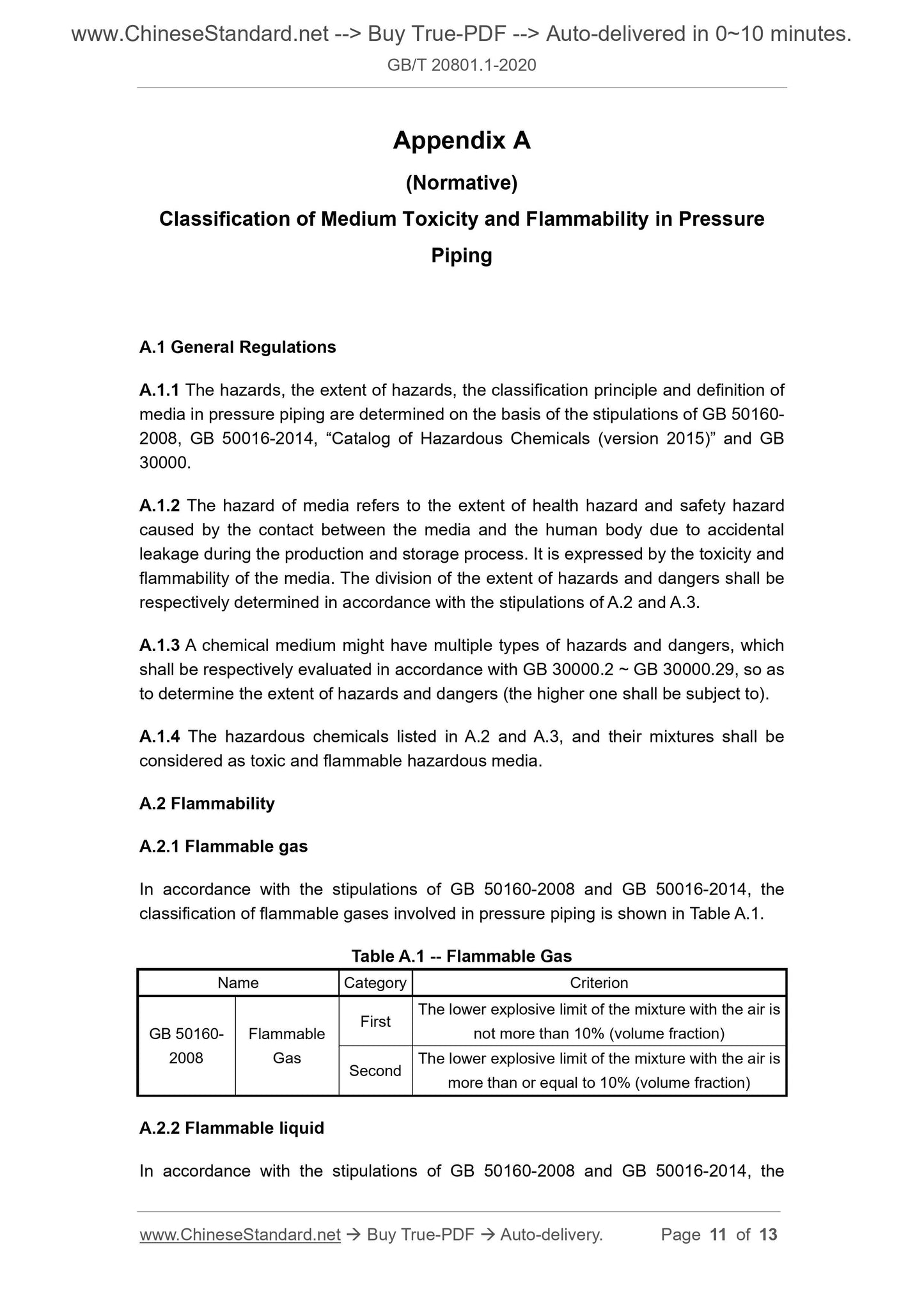1
/
of
6
www.ChineseStandard.us -- Field Test Asia Pte. Ltd.
GB/T 20801.1-2020 English PDF (GB/T20801.1-2020)
GB/T 20801.1-2020 English PDF (GB/T20801.1-2020)
Regular price
$125.00
Regular price
Sale price
$125.00
Unit price
/
per
Shipping calculated at checkout.
Couldn't load pickup availability
GB/T 20801.1-2020: Pressure Piping Code - Industrial Piping - Part 1: General
Delivery: 9 seconds. Download (and Email) true-PDF + Invoice.Get Quotation: Click GB/T 20801.1-2020 (Self-service in 1-minute)
Newer / historical versions: GB/T 20801.1-2020
Preview True-PDF
Scope
1.1 GB/T 20801 specifies the basic requirements for the design, fabrication, assembly,inspection, testing and safeguarding of industrial metal pressure piping.
1.2 This Part of GB/T 20801 specifies the basic requirements for pressure piping, such
as. the scope of application and the classification of piping.
1.3 In this Part, industrial metal pressure piping (hereinafter referred to as “pressure
piping”) includes pressure piping for process equipment, auxiliary equipment and
public works within the boundary.
This Part is applicable to piping under the following conditions.
a) Pressure piping. the maximum working pressure is greater than or equal to
0.1 MPa (gauge pressure); the medium is gas, liquefied gas, steam, or
combustible, explosive, toxic and corrosive liquid whose maximum working
temperature is higher than or equal to the standard boiling point; the nominal
diameter is greater than or equal to 50 mm. Except for piping whose nominal
diameter is less than 150 mm, the maximum working pressure is less than 1.6
MPa (gauge pressure), and transports non-toxic, non-flammable, non-
corrosive gases and piping that belongs to the equipment body.
b) Pressure piping other than those listed in 1.5.
1.4 This Part does not include the following scopes.
a) Special requirements for the renovation, examination, inspection, testing,
maintenance and repair of in-service pressure piping;
b) Piping whose nominal pressure is above PN420;
c) Non-metallic piping or its lining layer.
1.5 The inapplicable scope of this Part is as follows.
a) Piping for military equipment and nuclear facilities;
b) Piping for exploration and mining equipment of petroleum, natural gas and
geothermal energy;
c) Pressure piping on mobile equipment, such as. railway locomotives,
automobiles, ships and aerospace vehicles, etc.;
d) Type-GA long-distance piping;
e) Type-GB public piping;
f) Type-GCD power piping;
g) Internal piping of boilers, pressure vessels and heating furnaces, external
piping ports of equipment;
h) Piping whose design pressure is lower than 0.1 MPa (gauge pressure), but
not lower than atmospheric pressure, for the conveying of non-toxic, non-
flammable and non-corrosive fluids.
Basic Data
| Standard ID | GB/T 20801.1-2020 (GB/T20801.1-2020) |
| Description (Translated English) | Pressure Piping Code - Industrial Piping - Part 1: General |
| Sector / Industry | National Standard (Recommended) |
| Classification of Chinese Standard | J74 |
| Classification of International Standard | 23.040 |
| Word Count Estimation | 10,152 |
| Date of Issue | 2020-03-06 |
| Date of Implementation | 2020-10-01 |
| Older Standard (superseded by this standard) | GB/T 20801.1-2006 |
| Quoted Standard | GB/T 20801.2; GB/T 20801.3; GB/T 20801.4; GB/T 20801.5; GB/T 20801.6; GB 30000.2; GB 30000.3; GB 30000.4; GB 30000.5; GB 30000.6; GB 30000.7; GB 30000.8; GB 30000.9; GB 30000.10; GB 30000.11; GB 30000.12; GB 30000.13; GB 30000.14; GB 30000.15; GB 30000.16 |
| Issuing agency(ies) | State Administration for Market Regulation, China National Standardization Administration |
| Summary | This standard specifies the basic requirements such as the scope of application of pressure pipelines and pipeline classification. The industrial metal pressure pipes (hereinafter referred to as "pressure pipes") referred to in this standard include process equipment, auxiliary equipment and pressure pipes belonging to public works within the boundary. This standard applies to pipelines under the following conditions: a) The maximum working pressure is greater than or equal to 0.1 MPa (gauge pressure), the medium is gas, liquefied gas, steam or flammable, explosive, toxic, corrosive, and the maximum working temperature is higher than or Pressure piping for liquids with a standard boiling point and a nominal diameter greater than or equal to 50 mm. Nominal diameter less than 150 m |
Share
